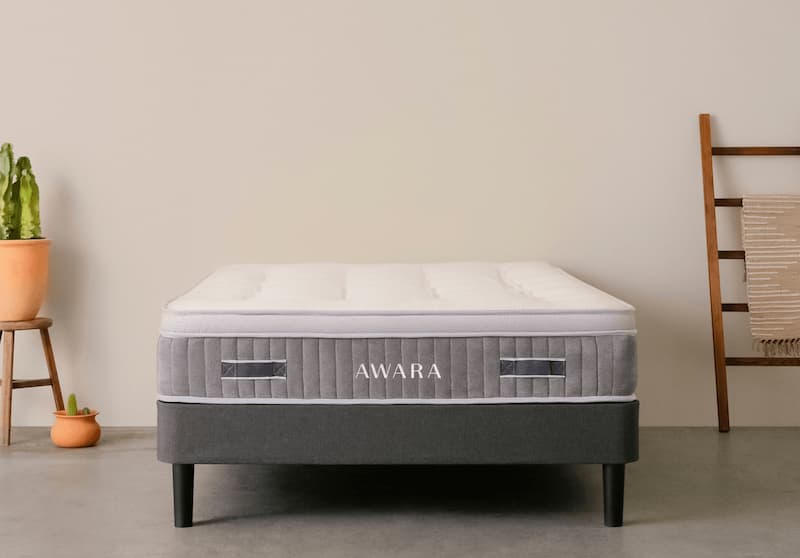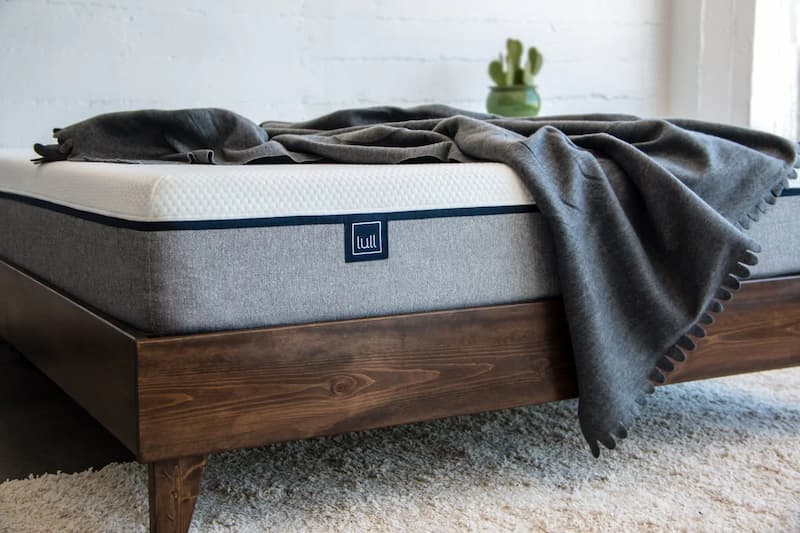How to Get Rid of Bedbugs? What You Need to Know!

Bedbugs are only 5 millimeters across, which is the size of a pencil eraser. These bugs are intelligent and hardy, and they reproduce swiftly. Bedbugs know where to hide to escape discovery and can go months without eating. In her lifetime, a female can lay 500 eggs.
It’s no surprise that these little bloodsuckers can wreak havoc in your house. They may create red, itchy welts all over your body if they come into bed with you.
Table of Contents
Where to Look for Bed Bugs?
Bedbugs may infiltrate your house unnoticed via luggage, clothing, secondhand mattresses and sofas, and other objects. Their flattened bodies allow them to fit into small places around the width of a credit card. Bedbugs, unlike ants and bees, do not have nests and prefer to dwell in groups in hiding places. Their first hiding spots are usually in mattresses, box springs, bed frames, and headboards, where they may easily bite victims during the night.
They may, however, disperse around the bedroom over time, crawling into any crack or sheltered area. They might potentially spread to neighboring rooms or apartments.
Because bedbugs live solely on blood, having them in your home is not a sign of dirtiness. You are as likely to find them in immaculate homes and hotel rooms as in filthy ones.
When Bedbugs Bite?
Bedbugs are active mainly at night and usually bite people while they are sleeping. They feed by piercing the skin and withdrawing blood through an elongated beak. The bugs feed from three to 10 minutes to become engorged and then crawl away unnoticed.
Most bedbug bites are initially harmless, but subsequently develop into unpleasant welts. Bedbug bites are on any exposed skin when sleeping, as opposed to flea bites, which are mostly around the ankles. Furthermore, unlike flea bites, the bites do not have a red mark in the middle.
People who are unaware of a bedbug infestation may ascribe itching and welts to other sources, such as mosquitoes. To confirm bedbug bites, you must first locate and identify the bugs.
Bedbugs Infestation Symptoms
If you wake up with itching regions where you did not have them when you went to bed, you may have bedbugs, especially if you purchased a used bed or other used furniture around the time the bites began. Other indicators of bedbug infestation include:
- Stains from blood on your bedding or pillows
- Bedbug feces that is dark or rusty on sheets and mattresses, bed clothing, and walls
- In regions where bedbugs hide, look for fecal stains, egg shells, or shed skins.
- The smell glands of the bugs emit an awful, musty stench.
If you suspect an infestation, remove all bedding and thoroughly inspect it for evidence of bugs or their faeces. Examine the seams in the wood framing by removing the dust cover from the bottom of the box springs. Remove the staples that hold the cloth to the wood frame.
Examine the area around the bed, including inside books, telephones or radios, the carpet’s border, and even electrical outlets. Bedbugs may adhere to clothing, so check your closet. If you are unsure about bedbug indicators, contact an exterminator who will know what to check for.
If you see evidence of an infestation, take action to get rid of the bugs and keep them from returning. See more about Early Bed Bug Stains On Sheets
Is It Possible To Get Rid Of Bedbugs On Your Own?
Bedbugs can be eradicated. Be patient, since getting rid of bedbugs might take some time and effort. If you have a huge infestation, you may need to attempt a couple different chemical and nonchemical techniques.
Certain conditions might make bedbug removal more difficult. If you have a lot of clutter or travel frequently and bring new bedbugs home in your luggage, you may have a more difficult time getting rid of them.
If you are unable to get rid of them on your own, you may need to hire a professional exterminator. Continue reading for a step-by-step approach to getting rid of bedbugs.
How To Get Rid Of Bedbugs?
Step 1: Locate all affected places.
If you have bedbugs, you want to catch them as soon as possible before they proliferate. A minor infestation is significantly easier and less expensive to cure than a large one. Smaller infestations, on the other hand, might be more difficult to detect.
You may look for bedbugs yourself or engage an expert to do so. Some inspectors use specially trained dogs to sniff out bedbugs.
Bedbugs’ compact and narrow bodies allow them to fit into tight spaces, such as mattress or sofa seams and curtain folds.
Look for these as well:
- near the tags of the mattress and box spring
- in cracks in the bed frame and headboard
- in baseboards
- between couch cushions
- in furniture joints
- inside electrical outlets
- under loose wallpaper
- underneath paintings and posters on the walls
- in the seam where the wallpaper and ceiling meet
Examine all of these places with a flashlight and magnifying lens.
Bedbugs can be identified by the following symptoms:
- live bedbugs, which are reddish and approximately 1/4-inch long black specks about the size of a period – these are bedbug droppings little and pale yellow eggs, egg shells, and yellowish skins that juvenile bedbugs shed
- When you detect a bedbug, place it in a tightly sealed container with 1 teaspoon of rubbing alcohol. Other species of bugs can resemble bedbugs. If you’re unsure what kind of insect you’ve discovered, take it to an exterminator or entomologist for identification.
Step 2: Keep the infestation at bay.
Once you’ve determined that you have bedbugs, you must keep them confined in order to eradicate them. Using your vacuum to capture bedbugs is a quick and easy method. Vacuum over any potential hiding spots.
This includes the following:
- bed
- dresser
- carpets
- electronics, like TVs
Put the vacuumed contents in a plastic bag and toss it. The vacuum should then be completely cleaned.
Place all of your linens and afflicted clothing in plastic bags until they can be washed. Then, in a washing and dryer, set the maximum temperature feasible. If an item cannot be washed, place it in the dryer on the highest heat setting for 30 minutes.
Anything that cannot be washed and dried should be placed in a plastic bag. If feasible, leave it there for a few months to ensure that all the bugs expire.
If you can’t clean it, get rid of it. Tear it up first, then spray paint the term “bedbugs” on it so that no one else takes it home.
Step 3: Get Ready for Bed Bug Treatment
Do some preliminary work before you begin treating your house to increase your chances of success. Ensure that any linens, carpets, draperies, clothes, and other hiding spots have been cleaned or discarded (see step 2).
Next, eliminate bedbug hiding places:
- Pick up any books, magazines, clothing, or other items that are lying on the floor or beneath your bed.
- Throw away whatever you can.
- Moving objects from an infected room to a clean one may spread the pests.
Close out any gaps:
- Stick down any loose wallpaper.
- Fill gaps in furniture and around baseboards with caulk.
- Tape up any exposed electrical outlets.
- Finally, position your bed 6 inches away from the wall to keep bedbugs at bay.
Step 4: Get rid of the bedbugs.
How to Remove Bedbugs at Home
You may initially try to get rid of bedbugs without using pesticides. High heat at 115°F (46.11°C) or strong cold at 32°F (0°C) will easily destroy these bugs.
Here are a few strategies for treating bedbugs that use these methods:
- 30 minutes in hot water with bedding and clothing Then, for 30 minutes, place them in the dryer on the maximum heat setting.
- Steam mattresses, sofas, and other areas where bedbugs hide.
- Infested goods should be placed in black bags and left outside on a hot day that exceeds 95°F (35°C) or in a closed automobile. It might take 2 to 5 months to eliminate sealed-up bugs in lower temperatures.
- Place bedbug-infested bags in the freezer at 0°F (-17.78°C). Check the temperature with a thermometer. Leave them for at least four days.
- After you’ve cleaned up any visible bedbugs, make the space uninhabitable for the remaining ones. Cover your mattress and box spring with bedbug-proof coverings. Zip the covers all the way up. Bugs trapped within will die, and fresh bugs will be unable to enter.
If these approaches do not completely eliminate the pests, you may need to use an insecticide.
Treatments, both nonchemical and chemical
Bedbugs may be controlled with insecticides. Look for products that have been registered with the United States Environmental Protection Agency (EPA) and are labeled for use against bedbugs.
Here are a few pesticides to consider:
- The most frequent pesticides used to kill bedbugs are pyrethrins and pyrethroids. Some bedbugs, however, have developed resistance to them.
- Bedbugs are killed by pyrroles, which, like chlorfenapyr, destroy their cells.
- Nicotine analogs are neonicotinoids. They cause nervous system harm in the bugs. This chemical is effective against bedbugs that have developed resistance to other insecticides.
- Dessicants are chemicals that eat away at the bugs’ protective outer shell. The bugs would perish if they did not have this covering. Dessicants include silica aerogel (Tri-Die and CimeXa) and diatomaceous earth. Dessicants have the benefit of not becoming resistant to bedbugs, but they operate slowly. It may take several months for these solutions to eliminate all pests.
- Bedbugs are killed by foggers or insect bombs, but they cannot reach the gaps and crevices where these bugs hide. If used incorrectly, they can potentially be hazardous to people. Take your time reading the label. Before you set off a fogger, leave the room.
- Plant oil-based insecticides, such as EcoRaider and Bed Bug Patrol, are less hazardous than chemical pesticides and are effective against bedbugs.
Step 5: Assess and avoid future bedbug infestations.
Bedbugs can be difficult to eradicate. You need confirmation that the bugs have moved on before you can be confident your treatment was effective. Check the affected areas for evidence of activity once every 7 days.
Place bedbug interceptors under each leg of the bed to make surviving bedbugs easier to notice. Bedbugs will be trapped by these gadgets before they can climb into your bed. You may need to examine the interceptors for an entire year.
Bedbugs are tough little buggers. You could find them again just when you believe you’ve eliminated them. To control the infestation, you may need to attempt a few different treatment procedures. If they don’t go away, you’ll need to hire a professional exterminator.
Step 6: Enlist the assistance of professionals.
If you can’t get rid of bedbugs on your own, it’s time to call in the professionals.
Pest control firms have the benefit of having access to pesticides and other treatments that you do not. They have pesticides that kill bugs on touch as well as linger within furniture and gaps to kill bedbugs over time.
Whole-room heat treatments can also be used by pest control businesses. They send in special equipment that warms the room to temperatures ranging from 135 to 145°F (57.22 to 62.78°C) – hot enough to kill bedbugs.
Before the pest control firm arrives, you should be given advice on how to prepare your house. If you properly follow their instructions, you will have the best chance of eliminating the problems.
Professional treatments require two to three visits before they begin to work. After each application, you may need to leave the treated rooms for a few hours to allow the pesticides to dry.
Step 7: Keep bedbugs at bay.
You’ll want to make sure the bedbugs are gone for good after they’re gone:
Remove any clutter. Leave no papers, periodicals, clothing, or other things on the floor.
Use a bedbug cover to completely encase your mattress and box spring.
Vacuum and wash bedding, furniture, curtains, and carpets on a regular basis.
Seal crevices around light sockets, baseboards, and electrical outlets to keep bedbugs out.
When traveling, look for bedbugs in hotel rooms to prevent carrying them home with you.



















